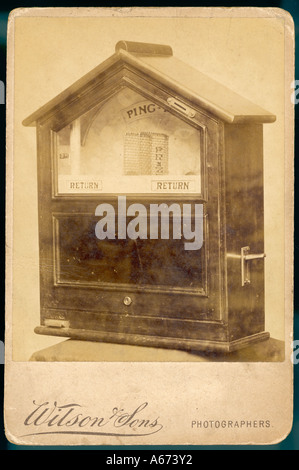Penny Slot Machine Museum Brighton
You still know that museum as The National Museum of Penny Slot Machines. The Brighton location kept changing names over time.
- Penny Slot Machine Museum Brighton Uk
- Penny Slot Machine Museum Brighton England
- Penny Slot Machine Museum Brighton Beach
The two-seater car track
Penny Slot Machine Museum Brighton Uk
- Ξενοδοχεία σε κοντινή απόσταση (Museum of Penny Slot Machines): (0.03 χλμ) Sprachcaffe Club (0.03 χλμ) Selina Brighton (0.04 χλμ) West Beach Hotel (0.05 χλμ) Holiday Inn Brighton - Seafront (0.15 χλμ) The Oriental.
- Museum of Penny Slot Machines is located in a welcoming area of Brighton known for its bar scene and major shopping area. If you’re looking for a convenient place to stay, take a look at the 573 hotels and other accommodation options you’ll find within a mile.
For me, the most obvious attraction on the pier was on the right, just after having passed through the paybooth. This was the near oval shaped track on which petrol driven, two-seater cars were driven round and round. I liked to stand and watch these for ages. Many years passed before I was able to afford to drive one of them. I believe, also, that there was a minimum age and height restriction on drivers? I felt that the best view of this track was from the pavement outside the pier. Perhaps this was to attract more paying visitors in.


Penny in the slot machines
Once through the paybooth, the only walkway, which was on the left hand side of this track, sloped downwards. Where the walkway levelled out, probably at the far end of the car track there was an amusement machine hall with its entrance on the right hand side. Here there was a wide range of ‘old’ penny in the slot machines. I think this hall must have been mostly underneath the car track as I vaguely remember the rumble from the ceiling as the cars were driven round above.
A special treat
Very close to this amusements hall entrance, also on the right hand side of the walkway, was a Walls ice cream stand. A special treat was to have a block of ice cream from there and to eat it straight from its wrapping paper or like a sandwich with a wafer biscuit on the top and underneath the block. When I eat Walls ice cream, even today, I can still recall the distinctive taste of those blocks – or is my memory playing tricks?
Which memories – which pier?
During those years I went on both the Palace and West piers many times. So now, I can’t be absolutely certain which of my other ‘pier’ memories apply to which pier. Did the makers of the film “Oh What a Lovely War” use the West Pier for quite a lot of its scenes?
What attractions do you remember? Please share your memories by posting a comment below.
In this guest post, University of Brighton student Olivia Terry discusses a clairvoyant exhibit in Brighton Museum, and how it records the history of the English seaside resort.
Tucked behind the entrance door of the Images of Brighton Gallery in Brighton Museum is a fortune-teller machine. The nearby caption titles this exhibit as “The Gipsy Fortune-Teller Slot Machine” which once resided on the Palace Pier and dates from the early 1930s. Trapped in a tall yellow and blue box is a one-eyed woman, decked out in gaudy jewelry seemingly busy writing fortunes with a quill. On the outside, the fortune-teller invites her audience to place a penny in the appropriate gender slot, and there are knobs that can be adjusted to select the viewer’s birth month. Towards the base of the box, a fortune was supposed to shoot out of a red aperture with golden cursive writing stating “tickets here” above it.
Machines like this were once a big part of the British seaside resort holiday culture. People would come from all over to take part in the fun that was seaside amusement parks and indulge in the thrills it had to offer. However, during the 1950s, amusement parks reached their peak in popularity when people started finding newer ways to entertain themselves such as visiting cinemas, concert halls and live shows, and the massive cost of the Second World War weighed heavily on the funding for amusement parks. Anya Chapman states ‘the decline in demand led to the closure of many attractions, tourist infrastructure and accommodation from the 1970s onwards,’ so novelty machines like the “Gipsy Fortune-Teller Slot Machine” would often become decrepit due to lack of upkeep.
Despite the near extinction of old amusement park games, there has been a rise in so-called ‘old penny’ arcades. These celebrate the nostalgia of antique slot machines similar to the Gipsy and now more than 20 reside in towns in Britain, the majority of them in seaside towns. Brighton has one fifty yards from Brighton Pier called “Mechanical Memories Museum”, and it contains machines ranging from the 1900s to the 1960s, including a fortune-teller, similar to this one in Brighton Museum. It is through old arcade games that we may understand Brighton’s rich history of being a town known for its many amusements, fun, and cheap thrills.
Olivia Terry, student on BA (Hons) Fashion and Dress History, University of Brighton
:quality(80)/a.travel-assets.com/findyours-php/viewfinder/images/res70/101000/101413-Brighton-Beach.jpg)
Bibliography

Chapman, Anya, “ “The ‘Heritagisation’ of the British Seaside Resort: The Rise of the ‘Old Penny Arcade,’” Journal of Heritage Tourism (2011) : (n.p) Taylor and Francis Online. Web. 17 Oct 2018.
Penny Slot Machine Museum Brighton England
“Mechanical Memories Museum.” Steam Heritage, Steam Heritage Publishing Ltd. (n.d) Web. 17 Oct 2018. https://www.steamheritage.co.uk